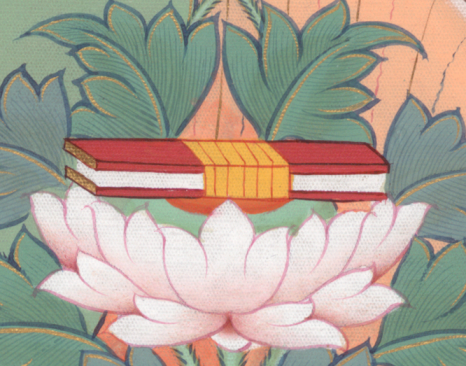The Journey of a Text in Translation: How Jamyang Khyentse Wangpo’s Works Are Translated and Published

The process of translating Jamyang Khyentse Wangpo’s works from Tibetan into English involves many unseen steps that are vital to producing reliable, accurate, and fluent translations. A translation should reflect its source in both word and spirit, which requires a thorough understanding of the source text and a careful consideration of its meaning. Khyentse Wangpo’s vast erudition, eloquence, and devotion for all Buddhist traditions are evident throughout his writings, and Khyentse Vision Project (KVP) endeavors to mirror this with each published translation. His ability to bring together scholarly rigor, authentic lineage transmission, and stylistic elegance are an inspiration for KVP’s work. In this spirit, KVP has developed translation methods and processes that aim to ensure the highest quality translations for readers and practitioners.
Translation inevitably involves cultural transmission, and so the first step of translation is to consider the source tradition of the lineage transmission from teacher to student. Dzongsar Jamyang Khyentse Rinpoche has given permission for the KVP team to read, study, and translate Khyentse Wangpo’s entire corpus. When working on tantric texts, KVP team members make sure to receive transmission from lineage holders as well as instructions and clarifications from Himalayan teachers and expert consultants. KVP likewise considers it essential for readers to seek out transmissions to engage with these materials.
The process of publishing Khyentse Wangpo’s texts in translation comprises two primary phases: the initial translation process and the subsequent editorial process. The first phase focuses on accurately translating the source text, while the second phase ensures that the translation is fluent and inspiring in English. The editorial team acts as a resource for translators throughout both phases to offer the support needed to see the translation through to successful completion.
Translation Process
When a translator wishes to translate a composition for which they have the necessary transmission, background knowledge, and expertise, they first discuss the project timeline and potential challenges with their editor. Once the project is confirmed and a deadline is established, the translator consults the various versions of the text from available collections. There are several editions of Khyentse Wangpo’s corpus, as well as versions found in other collections, such as the Treasury of Precious Termas (Rinchen Terdzö). Sometimes the various versions of the text include slightly different formulations that can impact its meaning and interpretation, and therefore it is important for the translator to compare them.
A crucial tool for translators is Khyentse Vision Project’s catalog, where one can locate the available editions of the texts and access valuable research on them. In addition to the catalog, the translator carries out further research in order to develop the necessary understanding of the context, history, and significance of the text at hand.
As the translator progresses through their translation, they regularly meet with the larger team to participate in reading workshops. These workshops bring together the collective expertise of KVP members to help clarify difficult passages. Translators also receive clarifications from lamas, khenpos, lopöns, and other traditionally trained expert scholars.
Once the translator has drafted a complete translation of a work from Khyentse Wangpo’s corpus and produced an introduction summarizing the background and contents of the composition, they submit their work to be reviewed by a fellow in-house translator. The reviewer checks the text carefully against the Tibetan source, line-by-line, to ensure there are no errors or missing passages. The translator then incorporates the reviewer’s feedback and submits the final translation to the editorial team.
Editorial Process
The editorial process is an essential stage in the production of high-quality translations. The editor offers substantial feedback on structure, style, and syntax to help improve the text’s clarity and meaning in English. The editor also checks that unfamiliar terminology is explained by glossary entries and that notes are added to elucidate cryptic passages. The translator and editor work closely together at this stage to strike a balance between an overly literal and an overly interpretive rendering.
A copy editor then polishes the translation, giving it a fresh look and providing final feedback regarding grammar, spelling, and layout. Once all edits are reviewed and approved by the translator, the text and its supplementary information are submitted for typesetting. Layout design is then applied to the text in preparation for final publication. Next, a proofreader reads through it carefully, looking for any remaining content or design errors. The research editor then gathers and prepares ancillary materials—such as online teachings, related translations, images, and additional research—and collates them together with the text. Once it has been fully proofread in the reading room, the text and its accompanying resources are finally approved for publication. Even after publication, KVP occasionally updates and improves translations when it is necessary to do so.
This lengthy process ensures that translations accurately convey the tone and meaning of the original composition and also provide a source of inspiration for readers. Through this robust and systematic approach, KVP aims to preserve the wisdom of Jamyang Khyentse Wangpo so that it can be widely appreciated in a new context, and the Khyentse lineage can continue to flourish throughout the world.
—KVP editorial team
